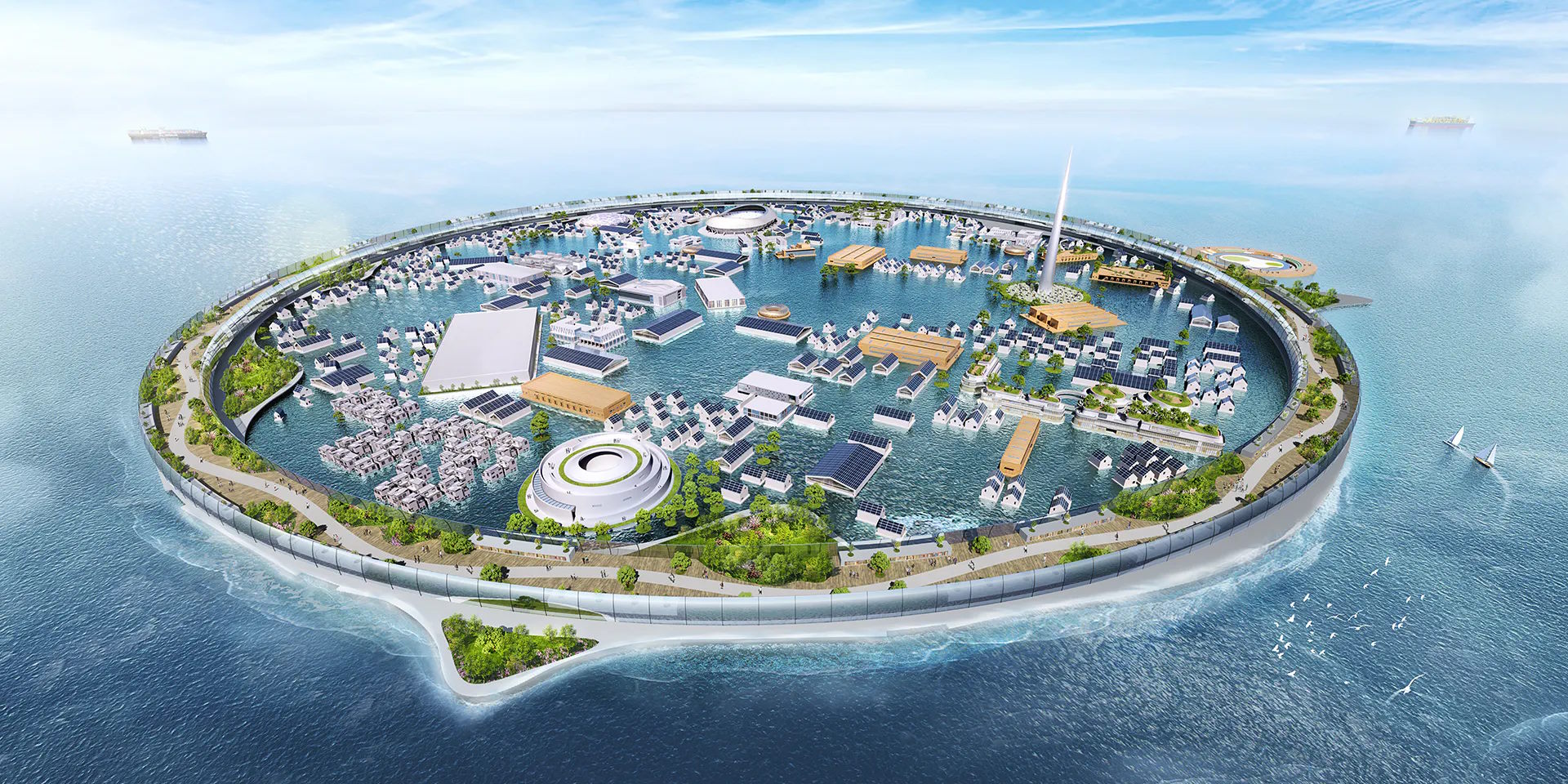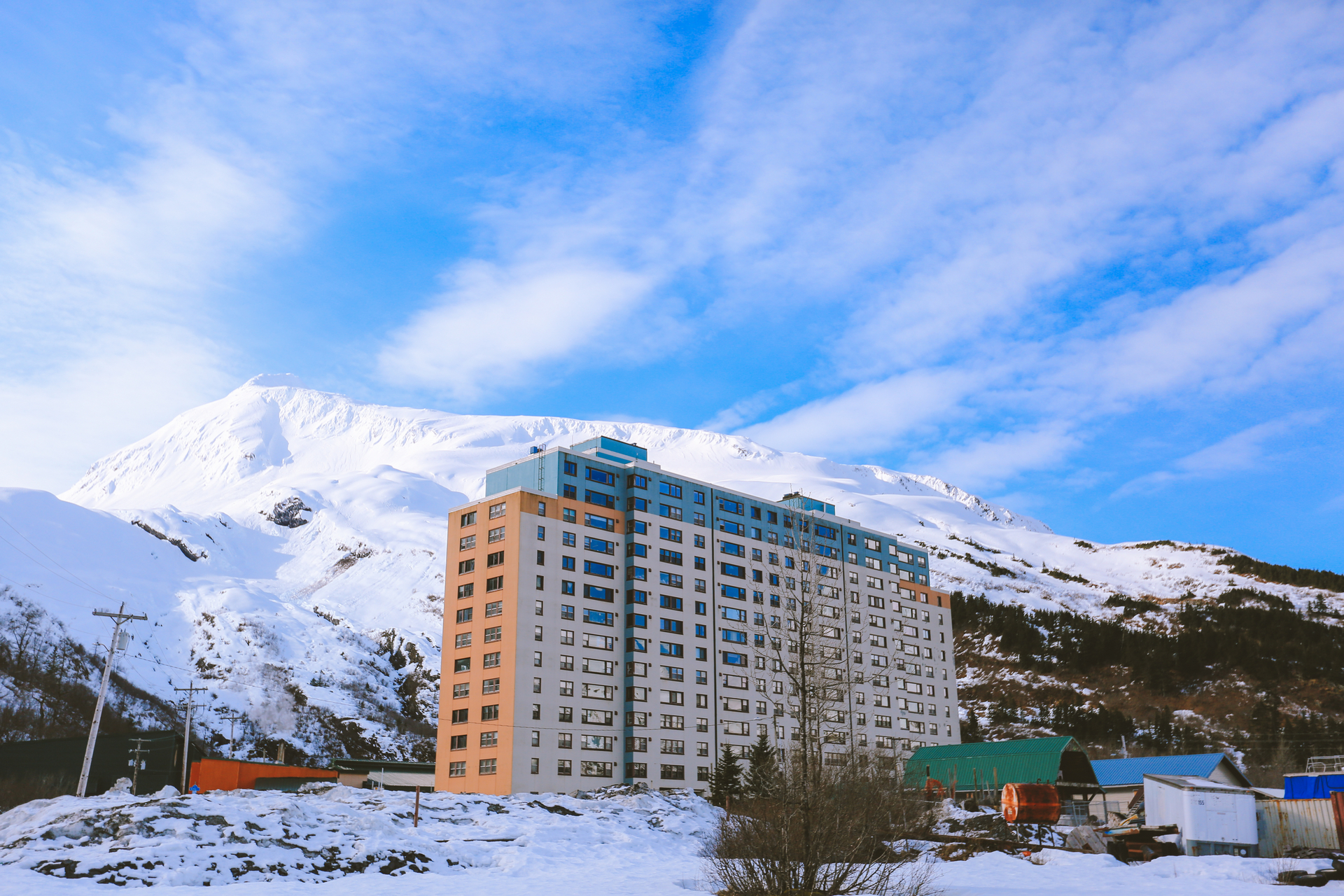Author | Lucía Burbano
The floating city of Dogen City is a Japanese start-up’s response to climate change and the rising sea levels threatening many cities. And it may, if it is ever completed, be the world’s healthiest city.
What is Dogen City?
Dogen City self-defines itself as a smart healthcare city floating on the sea that integrates food, architecture, data, energy, and ocean resources with a focus on healthcare. The designers of Dogen City are the start-up N-ARK, members of the NEW OCEAN consortium, made up of companies, academics and government.
The aim is to create a maritime economic zone that generates a new economic ecosystem made up of maritime cities and sustainably using the resources offered by oceans.
There will be two aspects to Dogen City, a social aspect, since it will function as a response to natural disasters and will accommodate climate refugees, and an economic aspect with a commitment based on new technologies and business.
Where will it be built?

Little is known at the moment regarding the exact location and the architectural details of Dogen City, but some information has been disclosed.
The foundations of the Japanese floating city are being built in the city of Hamamatsu, a port located approximately 200 km southwest of Tokyo. The corporation began operations during the second half of 2021, with the development of "Green Ocean", a marine farm based in Lake Hamana.
With a diameter of 1.58 km and approximately 4 km in circumference, Dogen City will be a small city where 10,000 people will live and it will welcome 30,000 visitors and tourists.
In architectural terms, it will be divided into three areas:
Habitable ring
This will provide infrastructure, housing and other services. Its shape in the form of a ship will protect the inner bay against potential tsunamis.
Undersea Edge Data Center
Cooled underwater, it will provide high value-added services such urban management, healthcare data analysis and drug discovery simulation while reducing energy consumption.
Autonomous floating architecture

It can move freely in the inner bay, it is not subject to land constraints, and allows for flexible reconfiguration of urban functions.
Its creators sustain that three industries will coexist in Dogen City: a maritime city with climate change adaptation functions, a constellation of submarine data centers and a tourism industry that connects the realms of space, sea, and land.
Will it really be self-sustainable?
According to N-ARK calculations, the city’s infrastructure will be capable of producing 2 million liters of clean water, 7,000 tons of food and 22,265,000 kW of solar power will be generated.

Other floating architectures
The floating city concept is not new. There are numerous ongoing projects that aim to prove that self-sufficient floating cities can be built in the sea.
The Maldives floating city
Based on the shape of a local coral called brain coral, and just a ten-minute boat ride from the capital Malé, 5,000 adjoining units will floaton one of its 200-hectare lagoons. The Dutch architects Waterstudio and Dutch Docklands, specializing in water-based urban planning solutions, are behind the project.
‘Polimeropolis’
The project proposes the urbanization of the Great Pacific Garbage Patch situated in the Pacific Ocean, and with an estimated surface area of between 710,000 km² and 17,000,000 km², with a series of giant floating islands that clean the ocean, built from self-capturing recycled plastic.
Presented as a scalable staged model of a city, the conceptual project comprises a sequence of mixed-use urban ‘rings’, each of which houses a cluster of habitats while enclosing a huge oceanic lagoon. The Focaccia Prieto Firm designed it.
Oceanix
In Busan, South Korea, Bjarke Ingels Group (BIG) is designing a floating city prototype, which was first revealed to the world in 2019. Made up of a series of hexagonal platforms, the city is designed to withstand natural disasters such as flooding, tsunamis and hurricanes.
It is initially expected to house around 10,000 residents, but more modular platforms will be added over time. Apart from being protected from flooding, the city will produce its own food, energy and fresh water with the integration of zero waste and closed loop systems.
Japan’s experience with building on water
Numerous examples including traditional architecture to the futuristic proposition of Dogen City, show how Japan does not seem to be afraid of building on water.
Itsukushima Torii Gate
Although it seems like it does, the Itsukushima Torii Gate does not float on water. It is built on four 15-meter pillars that stand in the shallow, muddy tide pools.
When it was being built, 593 CE (nearly 1,500 years ago), the entire island of Itsukushima was considered a God. That is why, it is said, that a location where the tides rise and fall was chosen specifically so the God Kami would not by damaged when they constructed the shrine.
Kansai
This artificial island, which is home to Osaka’s airport, sits on an 11-km long concrete seawall. A base was created on top with sand from the seabed, with millions of pipes filled with sand driven into it.
When they were removed and because of the clay compression, columns were formed on which to build. The weight of the concrete seawall compressed the clay, allowing seawater to seep through the columns, stabilizing the sand base.
Construction of Kansai began in 1987 and the works were completed in 1995.
Images | Dogen






















































